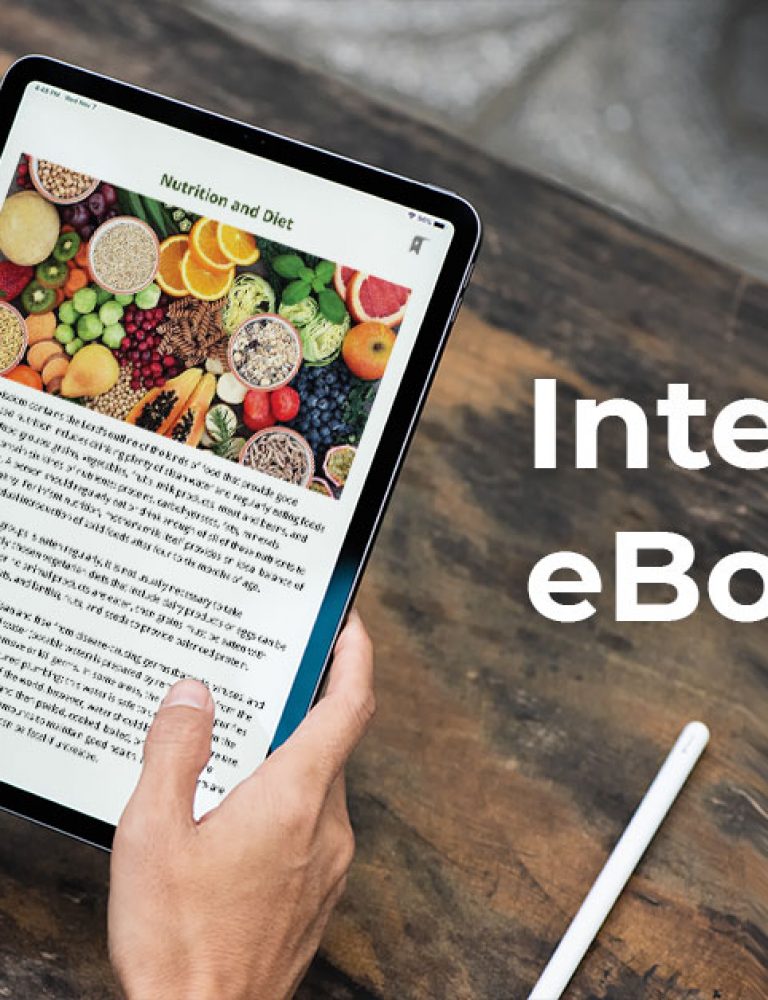The emergence of the digital era has brought about a paradigm shift in the way the publishing industry works. No more are publishers required to operate within the traditional confines of cumbersome, complex and expensive – hot metal typesets. Instead, they now have the freedom to produce a tremendous variety of readable books in any design, style and layout of their choice. This economical, efficient, and democratized way of converting textbook content to digital content has found such favor amongst the masses that many of the major publishers have already crossed over from print to digital!
The rise of digital formats has made life much easier for both authors and readers. Book digitization has reduced the need for creating physical storage facilities while protecting books against any substantial wear and tear. To top it, by using basic reproduction and distribution techniques, digitized content has allowed fiction or non-fiction books to be searched, accessed and processed by different, non-contiguous third parties. Consequently, their reach and impact have witnessed a quantum jump!
As a publisher, therefore, if you too are looking to convert your textbook content to digital content – here are 3 easy steps that you must follow to initiate this highly sought-after metamorphosis –
De-Bind Your Book
Largely considered to be one of the best ways to digitize a book, the process of de-binding books can easily be performed in a quick and cost-effective manner. All you have to do is rigorously adhere to the following steps –
Step 1 – Start by carefully removing the bindings on each book that you want to digitize. As every book is bound differently, you will have to be extremely cautious in removing its pages so that the damage caused, if any, is minimal.
Step 2 – Once the binding has been removed, you will need to isolate each sheet of paper as a singular, separate page. For this, you can simply use a paper-cutter to cut along the book’s left/right margins.
Step 3 – The next step is to place these sheets of paper, in order, into your document feeder. Your document feeder can either be a multi-facility printer or a page scanner. Put your papers, one by one, into the feeder and scan them from beginning to end.
Step 4 – Save the scanned file as a PDF or convert it into an ebook by using open source software.
While this process is relatively simple to perform, it does consume a large amount of time. This can prove to be a major hindrance if the number of books you want to convert into a digital format is more than ten.
Scan with a Device
If you think de-binding a book would not suit your needs, the next best way to convert textbook content to digital content is – scanning with a device. This device can be a professional image scanner or even a regular mobile phone! In both cases, here’s a list of steps you must follow :-
Step 1 – Scan the book page by page using a device of your choice. You can also click a picture of each page and upload them to your device.
Step 2 – Convert these files to text by using an OCR program like MS OneNote. Carefully check the text file you obtain for any spelling or grammatical errors. Sometimes, the program misreads words like ‘rn’ for ‘m.’ This would mean that ‘born’ can be wrongly translated to ‘bom.’ So, go through the document in detail and rectify mistakes, if any.
Step 3 – Save the file as docx or doc and import it into an open-source program, as before.
Step 4 – Add metadata such as tags, author name, image, book description, and more, if required.
Although the method of scanning and editing is preferred by some publishers over de-binding, this format, too, has its own set of limitations. The quality of scans can sometimes be questionable. Moreover, if you happen to miss a few errors, the tone and tonality of the book might change.
Seek Professional Assistance
Last but not the least, the most effective way to convert textbook content to digital content is by seeking credible professional assistance. At present, there exist a variety of professional conversion services in the market, which can help you transform your hard copies into multiple soft copies. These service providers have the necessary equipment, prowess, and expertise to carry out hundreds of digitization processes simultaneously, and they also enable you to protect, sustain, and maintain the overall quality of your books.
You, as a publisher, would merely be required to contact the nearest digitization service, pay them at a specific rate per page and obtain the converted version of your book with speed, efficiency, and ease.
Wrapping Up
As times change, eLearning will begin to gain much more popularity than it already does. More and more people will start jumping on the wagon of dynamic digital content in order to reap the maximum benefits from the transformative power of technology. So much so that e-publishing revenue will expectedly reach 7.78 billion in 2025!
In such a scenario, turning textbook content to digital content will remain the only viable option for many small and large publishers across the world. Not only would this give them a firm footing in the world of continuous technological advancement, but it would also help them increase textbook access, lower printing costs, save additional space, protect author copyright and thus, improve publishing outputs. So, what are you waiting for? Kickstart your book conversion and digitization process now!
To know more about how you can effectively convert your textbook content to digital content without compromising with its substance, value, and quality – visit KITABOO today!
FAQs
Are there any free tools for converting textbooks to digital format?
What are the copyright implications of digitizing textbooks?
Are there any recommended platforms for hosting digital textbooks?
How can I ensure my digital textbooks are accessible to all students?
Discover How An Ebook Conversion, Publishing & Distribution Platform Can Help You
Kitaboo is a cloud-based content platform to create-publish & securely distribute interactive mobile-ready ebooks.
You May Also Like






